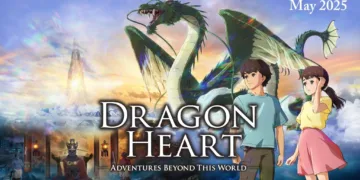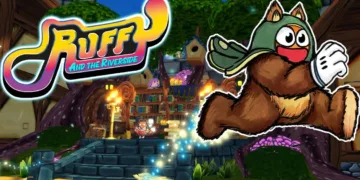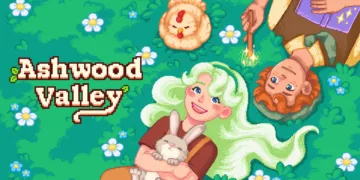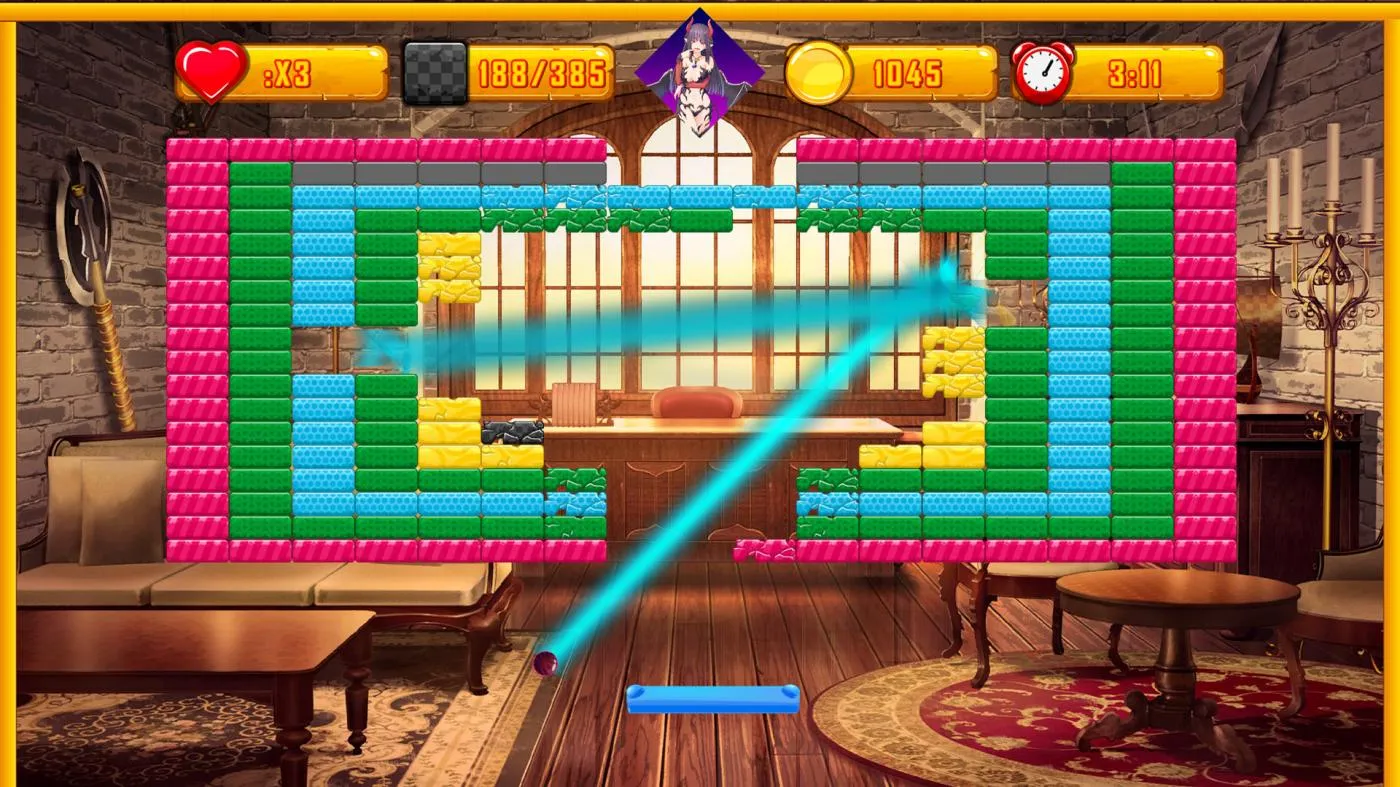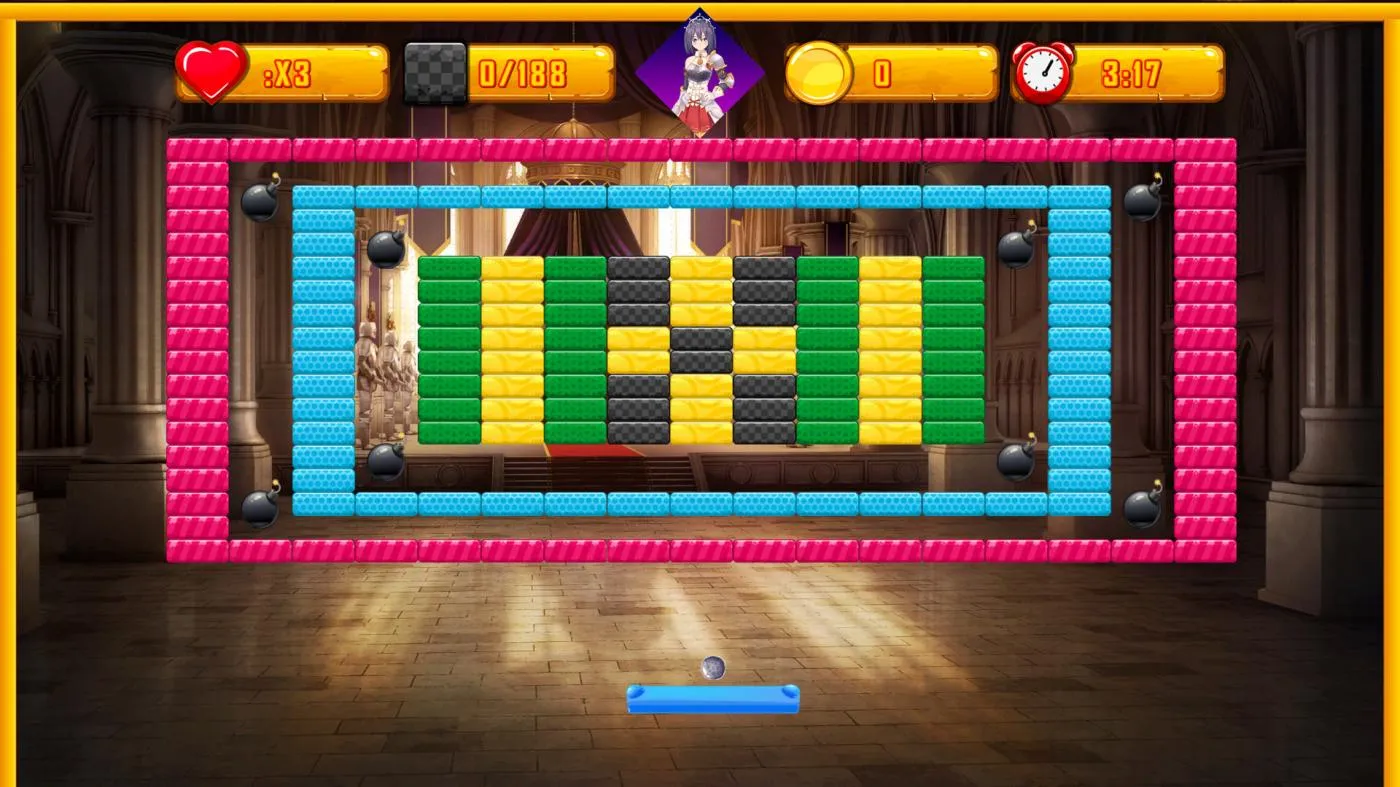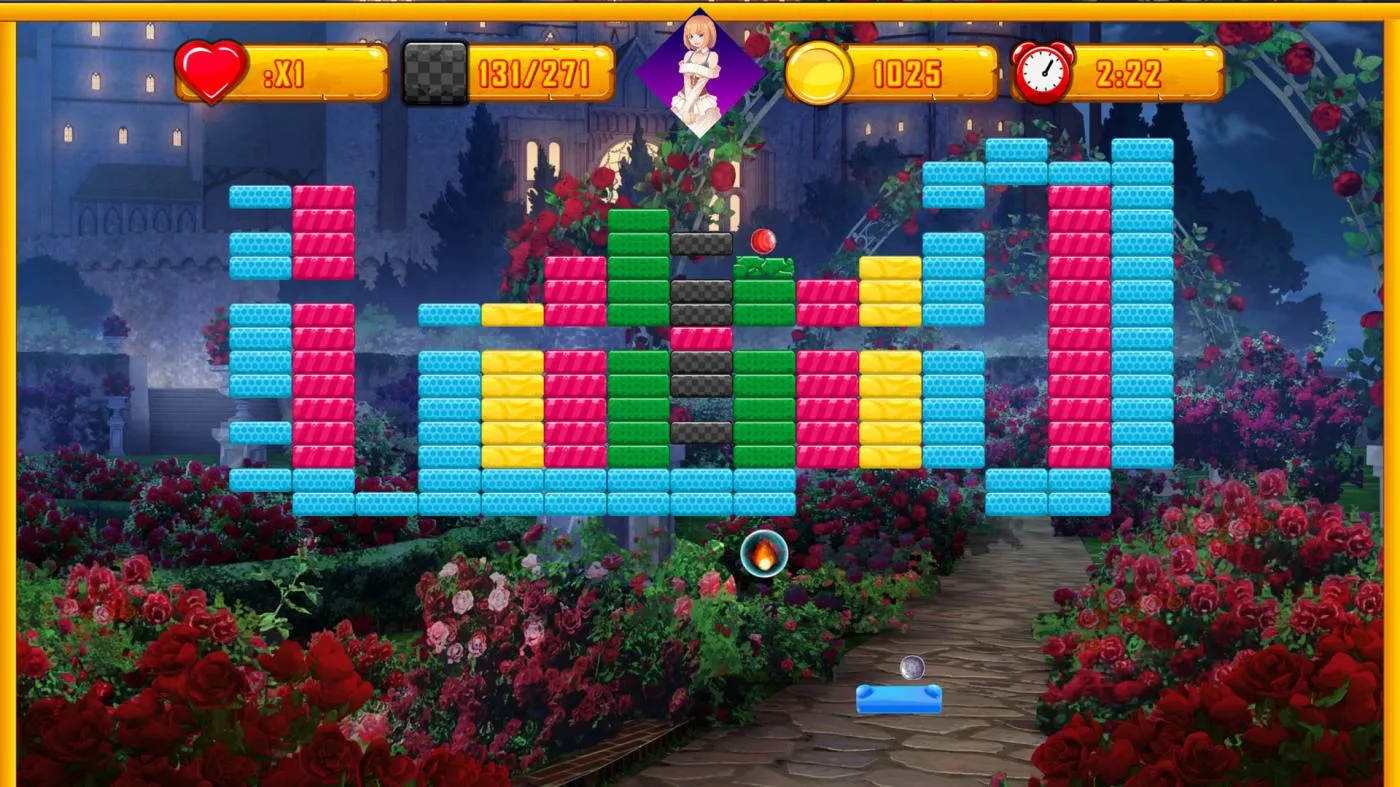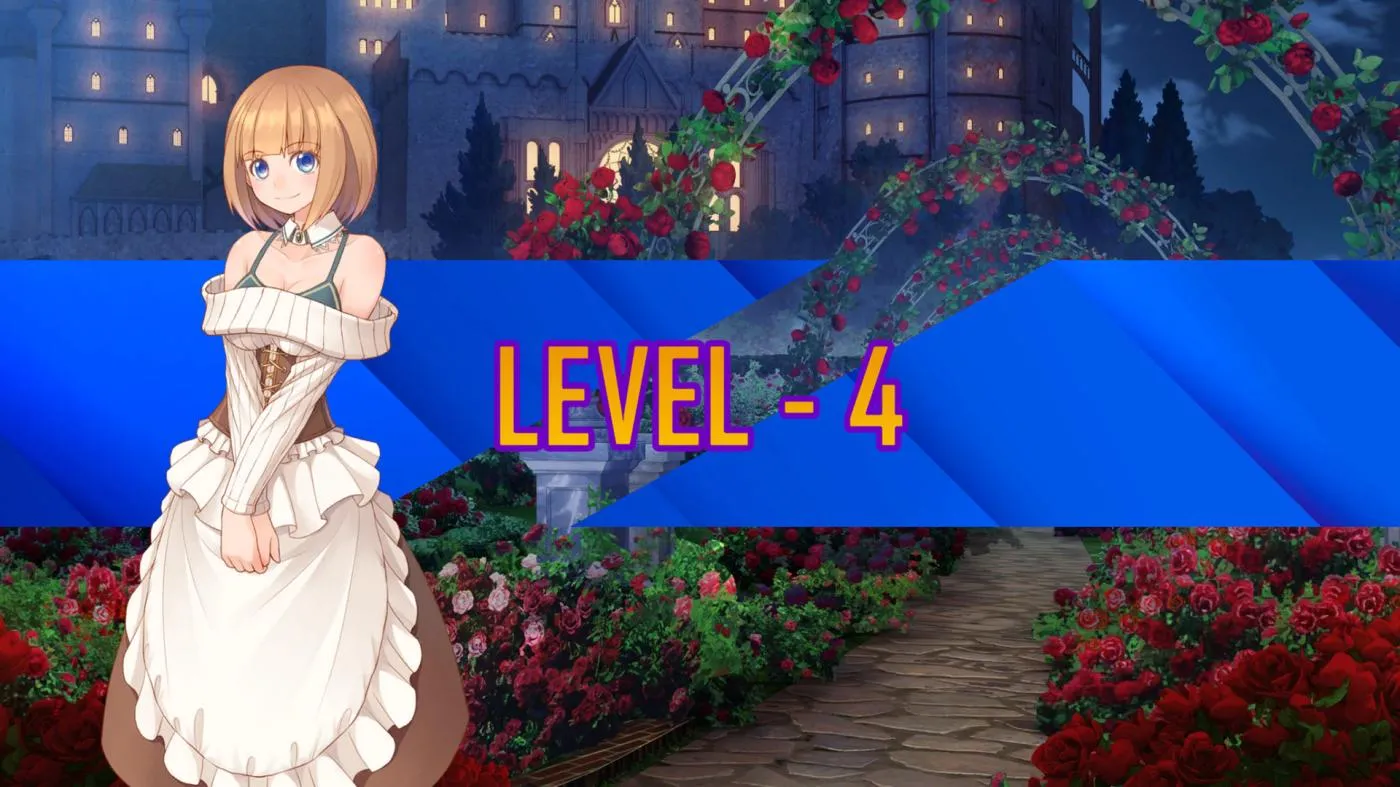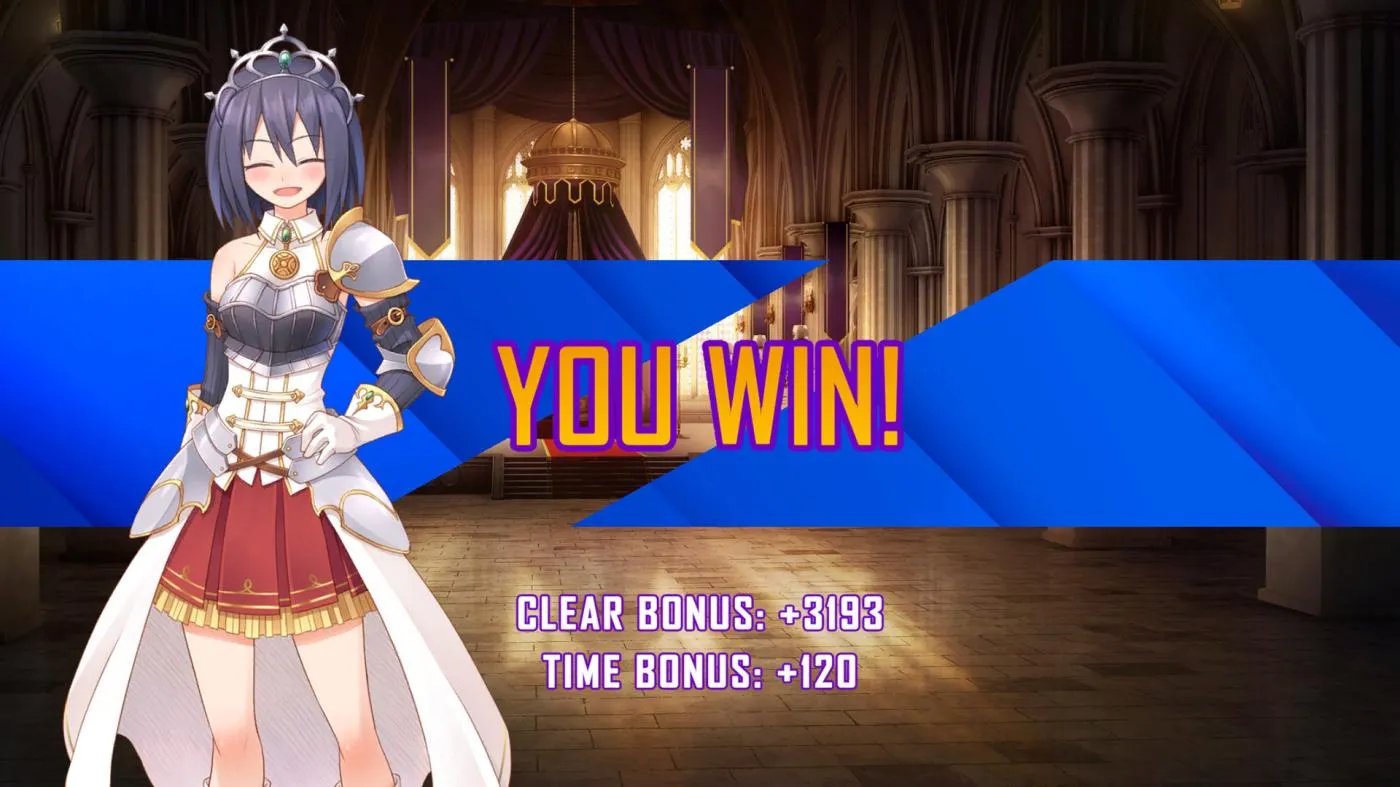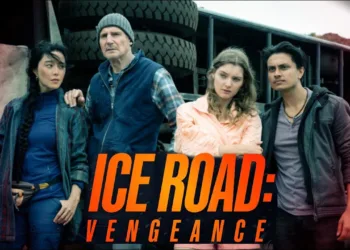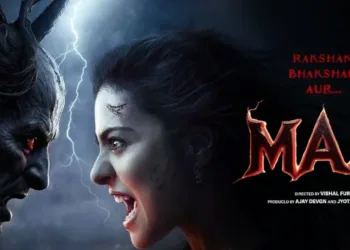Moe Waifu H BlockBlast is a strange addition to the classic brick-breaking genre. It was made by Yume Game Studio and released by Eastasiasoft. This PlayStation and Nintendo Switch game is based on the popular Breakout formula, but it has an anime-style twist that is both retro and sexy. The game is a simple puzzle where players have to break down blocks while being joined by five anime characters with unique looks.
Moe Waifu H BlockBlast is an arcade-style game made to be affordable. It has a unique take on the brick-breaking gameplay that made early video games popular. Players move a paddle at the bottom of the screen and bounce a ball off of it to destroy groups of blocks in 15 stages that get harder as you go. The game’s main draw is its characters: five anime girls that appear between levels and have three different clothes that players can unlock as they play.
The game doesn’t do anything new with gameplay, but it’s made for a specific group of players: prize hunters, casual puzzle fans, and anime fans who like how things look. Its simple design—quick gameplay, simple achievements, and a story that isn’t too hard to follow—makes it a great game for people who want to play for a short time without making a big commitment.
The game’s main draw is its look and ease of mechanical operation. It’s a light form of entertainment that doesn’t require much time or money from players. With its low price and quick platinum trophy possibility, Moe Waifu H BlockBlast seems like it was made for gamers who want a quick, visually pleasing break from their main games.
Block-Shattering Dynamics: Decoding Moe Waifu H BlockBlast’s Gameplay Architecture
Moe Waifu H BlockBlast changes the classic brick-breaking formula by adding a new weight to the game play, making traditional paddle-and-ball techniques harder. At its core, the game is controlled by a paddle at the bottom of the screen, which is used to carefully deflect a ball and destroy a grid of colourful blocks. The main goal of the game is still very simple: destroy all three lives of destructible blocks before they are all gone.
Most brick-breaking games use obvious ball paths, but this one adds an interesting physics twist. The ball moves with an odd amount of weight, slowly falling across the screen in a way that keeps players on edge all the time. This ball doesn’t move in a straight line like its predecessors did. Instead, it cascades, slows down, and changes speed in ways that make a simple concept into a challenging one.
Power-ups make the game more difficult to plan your moves for. Players can make big changes, like making the paddle bigger or smaller, firing lasers, or using skills that change the game. The lightning bolt greatly speeds up ball movement, and the fire power becomes a strategic tool that destroys otherwise impenetrable blocks. The multiball and rocket blaster options add more tactical depth but aren’t always useful.
There are 15 stages in the game, each representing a different anime character’s task. Level designs get harder over time by adding unbreakable blocks and timed tasks that test how fast a player can react. With the addition of a timer, each step goes from being a simple arcade game to a more difficult test of skill and accuracy.
It’s interesting how the game balances hard and easy play. In later rounds, things get harder, but the basic rules are still easy enough for casual players to enjoy. Random item drops and different power-ups make each run feel a little different, which keeps things from getting boring.
In the end, Moe Waifu H BlockBlast changes the brick-breaking game by adding small changes to how it works that make players think outside the box. It’s not so much about destroying things as it is about solving an interactive game that gets harder and harder. Timing, strategy, and a little luck are what determine success.
Pixel Heroines: Navigating Moe Waifu H BlockBlast’s Character Ecosystem
Moe Waifu H BlockBlast changes the standard brick-breaking experience by adding five anime-style characters that bring the game’s simple structure to life. These five digital women aren’t just for looks; they’re the visual heartbeat of the game, showing up at the start and end of each level in a planned way.
Each character’s clothes change as the game progresses. The change in clothes tells a subtle development story, starting with normal clothes and moving on to swimsuits and then more revealing lingerie. The outfit changes may not seem important, but they are there as a visual award system to give players a sense of progress beyond just breaking blocks.
The game’s gallery feature turns into a digital gallery where players can look at and enjoy the fully unlocked visual styles of the characters. Instead of just being pretty, it’s a carefully chosen collection that honours the artistic design that went into making each character. What could have been a simple arcade game becomes more involved when players can rotate, zoom, and look at each character’s three different outfits.
In addition to letting you change how things look, the jukebox tool lets you change how things sound. Each figure has a music theme, so players can play their favourites repeatedly. These five different pieces of music aren’t just background noise; they’re carefully designed themes that add to the anime-style look of the game.
Moe Waifu H BlockBlast characters may not have deep storylines, but they are stylized images that make the game more interesting than just a brick-breaking game. They are a fun mix of how games work and designs influenced by anime, and they offer more than just a mechanical challenge.
Pixels and Soundwaves: Visual and Auditory Landscape of Moe Waifu H BlockBlast
Moe Waifu H BlockBlast is a visually pleasing but simple game experience that strikes a fine balance between anime-inspired style and useful design. The images are somewhere between cheap production and stylized anime charm. They look clean and sharp, making the game feel more sophisticated than a normal flash game.
The character designs, which show five different anime women in clear, appealing art, are the visual foundation. The visual experience doesn’t get boring because each figure has its own background and colour scheme. Even though the images are pretty basic, they show enough personality to keep players interested as the levels change.
Even though level themes aren’t revolutionary, they offer enough visual variety to keep players interested. The colour schemes change slightly from one stage to the next, giving the impression of growth without being too busy on the screen. However, the user interface (UI) can sometimes get in the way of gaming, with menu items blocking important block formations.
The game has many different sounds when it comes to music. With five songs, one for each character, what could have been bland background noise becomes a more personal soundscape. The music is between merely adequate and truly enjoyable, with each track capturing a unique mood that goes well with the style of its corresponding character.
Sound effects, on the other hand, tend to be pretty standard. While they do their job, they quickly become repetitive, which means that during long play sessions, they might go from mildly interesting to slightly annoying. The sound design is purposely simple, putting a higher priority on gaming clarity over sound complexity.
The game is impressive in terms of how smoothly it runs. The visual and audio experience stays smooth because there are no frame drops and fast load times. This keeps technical issues from getting in the way of player engagement.
Navigating Pixels: Control Dynamics in Moe Waifu H BlockBlast
With Moe Waifu H BlockBlast, the controls are stripped down to their most basic levels, making for an easy-to-understand but possibly frustrating way to connect. The paddle movement is controlled by simple arrow keys, which lets players swing the paddle left or right with pinpoint accuracy. The main idea may sound simple, but how it’s put into action can show subtle complexities that can surprise players.
The controls are still very simple: pressing a single button sends the ball, and directional inputs move the paddle. The game is flawed because you can’t change how it plays. Players who want to change how the controls work or get more advanced input choices will be let down. Because the game has no accessibility options, it takes a one-size-fits-all approach that could turn off players with specific input needs.
Using the menus is easy and doesn’t take up much space. You only need to press a few simple buttons to use extra features like the character gallery or jukebox. This stays true to the game’s simple design theory. The in-game heads-up display (HUD) shows important information like the score, the timer, and power-ups without taking up too much space on the screen.
An annoying aspect of the interface is that sometimes, UI elements can interfere with gaming. Even though these visible blocks don’t stop the game, they make the experience less smooth. The HUD’s placement sometimes seems like a mistake instead of a well-thought-out design choice.
Technically, the controls work quickly, and there isn’t much input lag. The paddle always goes at the same speed, but some players may find it a bit slow compared to other brick-breaking games with faster movement. Every contact feels planned, even if the response isn’t always perfect.
The way you control the game is simple, practical, and straightforward, just like the game itself. It won’t change how input works, but it’s a good starting point for casual gamers who want a quick, easy gaming experience.
Pixel Precision: Navigating Moe Waifu H BlockBlast’s Challenge Landscape
Moe Waifu H BlockBlast makes a challenging curve that changes from looking incredibly easy to being frustratingly unpredictable. The game’s 15 levels get harder over time. They start out simple, with simple block-breaking challenges, and then add more difficult elements, like carefully placed bricks that can’t be broken and timed challenges.
The most difficult part of the game comes from the most unpredictable part: the way the balls move. In contrast to most brick-breaking games, which have clear paths, this one has a weighted ball that acts almost defiantly. Each level is an exercise in controlled chaos because the ball drops, curves, and changes speed in ways that players don’t expect. What should be a simple bounce turns into a nerve-wracking dance of reflexes and expectation.
The ideas of levels are right between being hard and being random. Timed tasks add a sense of urgency that can turn a relaxing game into a heart-pounding sprint, and unbreakable blocks make strategic obstacles. The timer is both a friend and an enemy; it forces players to be precise while making mistakes more likely.
Interestingly, the difficulty doesn’t increase with more complicated principles but with small changes to systems that are already in place. Power-ups can be both a lifesaver and a trap because some give you short-term benefits that can quickly become problems if you’re not careful.
With the platinum trophy possibility, the game seems pretty easy to get through—most people can finish it in about an hour. But just because something is easy to finish doesn’t mean it’s not challenging. Instead, it’s an experience carefully tuned to reward accuracy and flexibility.
Ultimately, Moe Waifu H BlockBlast is more of a mental task than a physical one. To be successful, you need to understand the game’s wonderfully random rules more than you need to be good at it.
Pixel Perks: Diving into Moe Waifu H BlockBlast’s Feature Ecosystem
Moe Waifu H BlockBlast has a feature set that is both very basic and surprisingly deep. It balances simple gaming with just the right extras to keep people interested. The power-up system is the most dynamic part of the game. It gives you a wide range of powers that change how you play and make breaking blocks a more strategic experience.
Power-ups can be useful or completely change the game. Changing the size of the paddles gives you instant tactical advantages, while laser attacks and the ability to use more than one ball cause temporary chaos on the board. The fire power becomes strategic, destroying blocks you couldn’t get through before and opening up new play methods. But these improvements don’t feel like game-changers; they are short-term fixes.
The medal system is the most well-thought-out design choice in the game. The game is perfect for people who like to finish things and get achievements because it has 15 individual level awards and a Platinum trophy that can be earned in about an hour. This method changes the game from a difficult arcade experience to an easy task of earning trophies.
It turns out to be pretty hard to replay. There are score tracking and personal best tasks, but the game is too short and the levels are too easy to guess, so playing for a long time is not fun. The gallery and jukebox add some extra value by letting players look at character drawings and musical themes outside the main game.
These extra features—the character gallery, outfit variations, and music tracks—are more for looks than for adding anything useful. Like an appetizer that hints at a more complex meal without actually offering it, they give you a taste of what’s to come but don’t give you the whole thing.
Ultimately, Moe Waifu H BlockBlast’s features show that it is designed to appeal to a specific customer on a budget. The game isn’t so much about depth as it gives players a quick, visually pleasing break from their more serious games.
Pixel Precision: Technical Execution of Moe Waifu H BlockBlast
As it turns out, Moe Waifu H BlockBlast is a very technically sound game that runs incredibly smoothly on both PlayStation and Nintendo Switch. Load times are almost instantaneous; no lag or frame rate interruption could stop the game’s flow.
The technical architecture of the game feels purposely simple, emphasizing speed over graphic complexity. There aren’t many differences between platforms, which suggests that the code has been carefully optimized to keep speed the same no matter what hardware is used. Whether you play it on PlayStation or Switch, the game is always fast and technically stable.
One strength that stands out is stability. Long periods of play don’t show any major bugs or technical issues, and the game runs exactly the same way it plays. The way the tech is put together feels like it was done on purpose—a simple, clean approach that prioritizes the player experience over visual show.
Moe Waifu H BlockBlast is basically the personification of technical efficiency. It’s a game that works exactly as it should, without any extraneous problems or speed drops.
The Review
Moe Waifu H: BlockBlast
The Moe Waifu H BlockBlast game is a simple, straightforward, brick-breaking, fun and frustrating adventure. It does a good job of reimagining the classic arcade genre with anime-inspired graphics and complex game mechanics, while being very aware of its niche market place. The game is exactly what it says: a quick distraction with enough strategy depth to keep casual players interested. Its strong points are its smooth technical performance, creative ball physics, and cute character designs. However, some of its flaws include a shallow replayability, limited growth, and a gameplay loop that repeats itself. Even though it's not a big deal, the game is fun for people who want a light gaming experience with minor strategic elements. The game doesn't try to change the genre; instead, it focuses on giving players a polished, easy-to-understand arcade experience that values their time and standards.
PROS
- Smooth technical performance
- Charming anime-inspired character designs
- Quick, accessible gameplay
- Interesting ball physics mechanics
CONS
- Limited replayability
- Short overall game duration
- Repetitive gameplay loop
- Shallow narrative elements





























